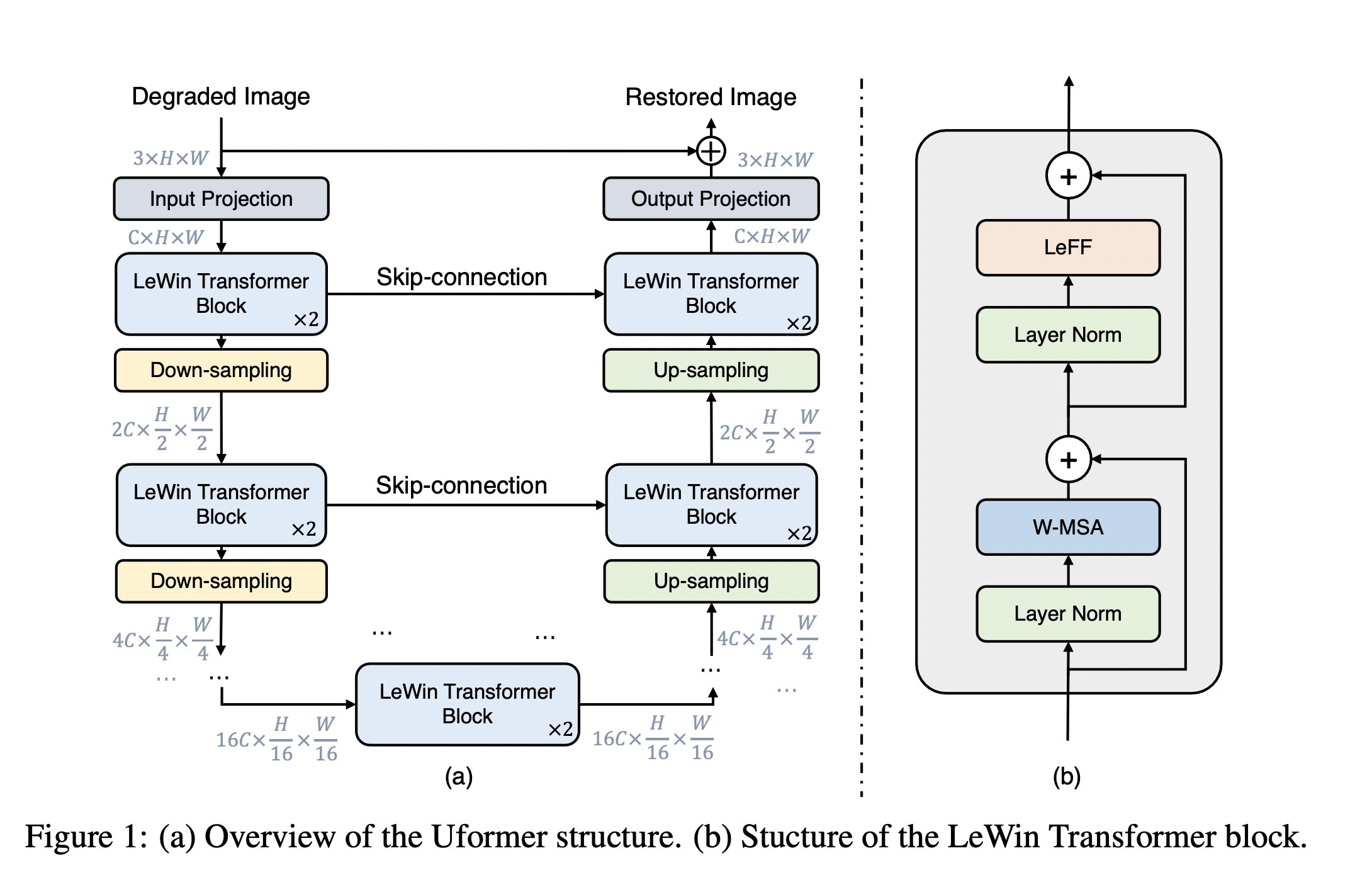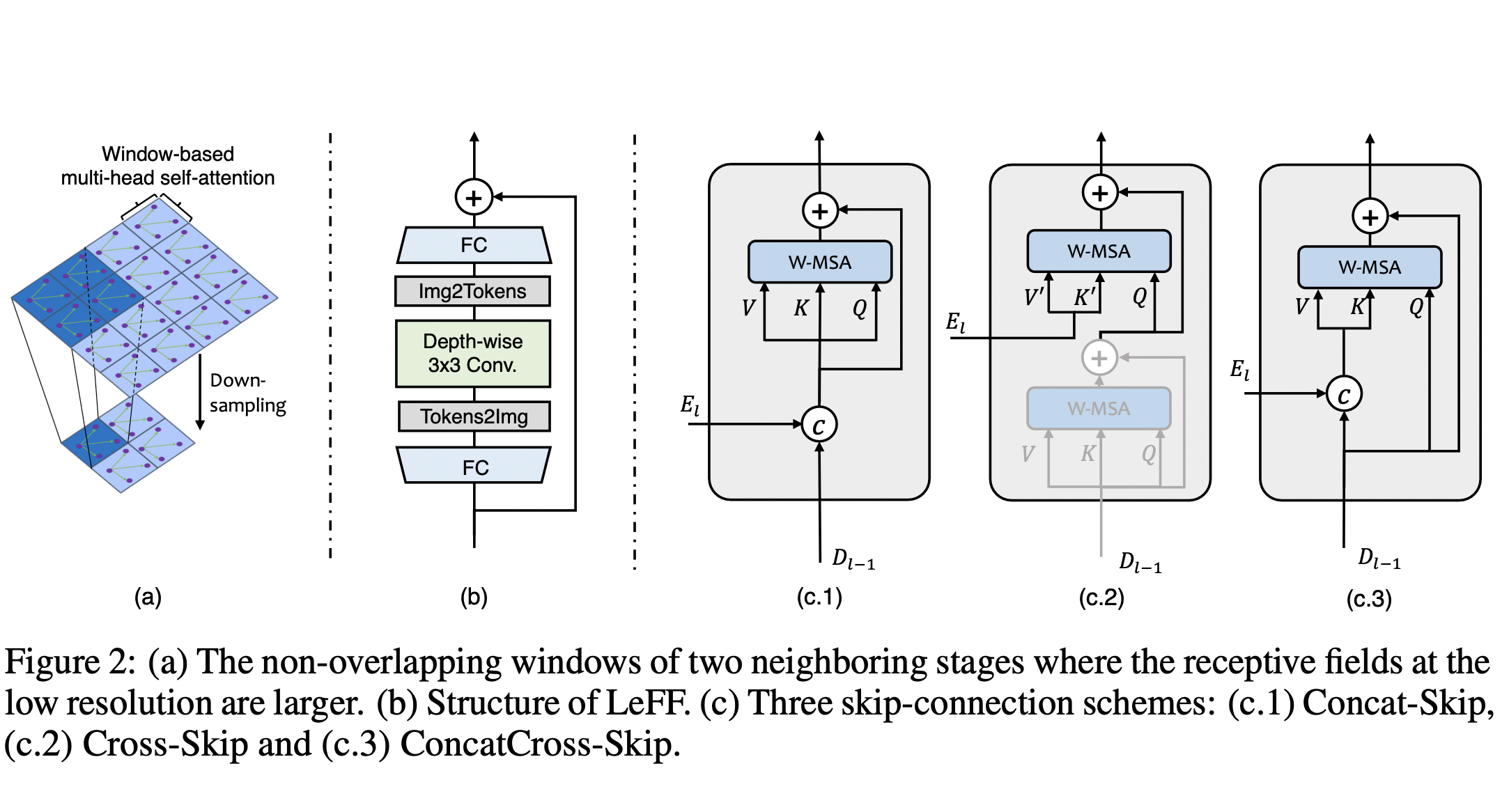Zhendong Wang, Xiaodong Cun, Jianmin Bao, Wengang Zhou, Jianzhuang Liu, Houqiang Li
Paper: https://arxiv.org/abs/2106.03106
- 2021.11.30 Update Uformer in Arxiv link. The new code, models and results will be uploaded.
- 2021.10.28 Release the results of Uformer32 on SIDD and DND.
- 2021.09.30 Release pre-trained Uformer16 for SIDD denoising.
- 2021.08.19 Release a pre-trained model(Uformer32)! Add a script for FLOP/GMAC calculation.
- 2021.07.29 Add a script for testing the pre-trained model on the arbitrary-resolution images.
In this paper, we present Uformer, an effective and efficient Transformer-based architecture, in which we build a hierarchical encoder-decoder network using the Transformer block for image restoration. Uformer has two core designs to make it suitable for this task. The first key element is a local-enhanced window Transformer block, where we use non-overlapping window-based self-attention to reduce the computational requirement and employ the depth-wise convolution in the feed-forward network to further improve its potential for capturing local context. The second key element is that we explore three skip-connection schemes to effectively deliver information from the encoder to the decoder. Powered by these two designs, Uformer enjoys a high capability for capturing useful dependencies for image restoration. Extensive experiments on several image restoration tasks demonstrate the superiority of Uformer, including image denoising, deraining, deblurring and demoireing. We expect that our work will encourage further research to explore Transformer-based architectures for low-level vision tasks.
The project is built with PyTorch 1.7.1, Python3.7, CUDA10.1. For package dependencies, you can install them by:
pip3 install -r requirements.txt- uformer32_denoising_sidd.pth [Google Drive]: PSNR 39.77 dB.
- uformer16_denoising_sidd.pth [Google Drive]: PSNR 39.65 dB.
- uformer32: SIDD dataset | DND dataset
For training data of SIDD, you can download the SIDD-Medium dataset from the official url. Then generate training patches for training by:
python3 generate_patches_SIDD.py --src_dir ../SIDD_Medium_Srgb/Data --tar_dir ../datasets/denoising/sidd/trainFor evaluation, we use the same evaluation data as here, and put it into the dir ../datasets/denoising/sidd/val.
To train Uformer32(embed_dim=32) on SIDD, we use 2 V100 GPUs and run for 250 epochs:
python3 ./train.py --arch Uformer --batch_size 32 --gpu '0,1' \
--train_ps 128 --train_dir ../datasets/denoising/sidd/train --env 32_0705_1 \
--val_dir ../datasets/denoising/sidd/val --embed_dim 32 --warmupMore configuration can be founded in train.sh.
To evaluate Uformer32 on SIDD, you can run:
python3 ./test.py --arch Uformer --batch_size 1 --gpu '0' \
--input_dir ../datasets/denoising/sidd/val --result_dir YOUR_RESULT_DIR \
--weights YOUR_PRETRAINED_MODEL_PATH --embed_dim 32 We provide a simple script to calculate the flops by ourselves, a simple script has been added in model.py. You can change the configuration and run it via:
python3 model.pyThe manual calculation of GMacs in this repo differs slightly from the main paper, but they do not influence the conclusion. We will correct the paper later.
If you find this project useful in your research, please consider citing:
@article{wang2021uformer,
title={Uformer: A General U-Shaped Transformer for Image Restoration},
author={Wang, Zhendong and Cun, Xiaodong and Bao, Jianmin and Liu, Jianzhuang},
journal={arXiv preprint 2106.03106},
year={2021}
}
This code borrows heavily from MIRNet and SwinTransformer.
Please contact us if there is any question or suggestion(Zhendong Wang ZhendongWang6@outlook.com, Xiaodong Cun vinthony@gmail.com).









